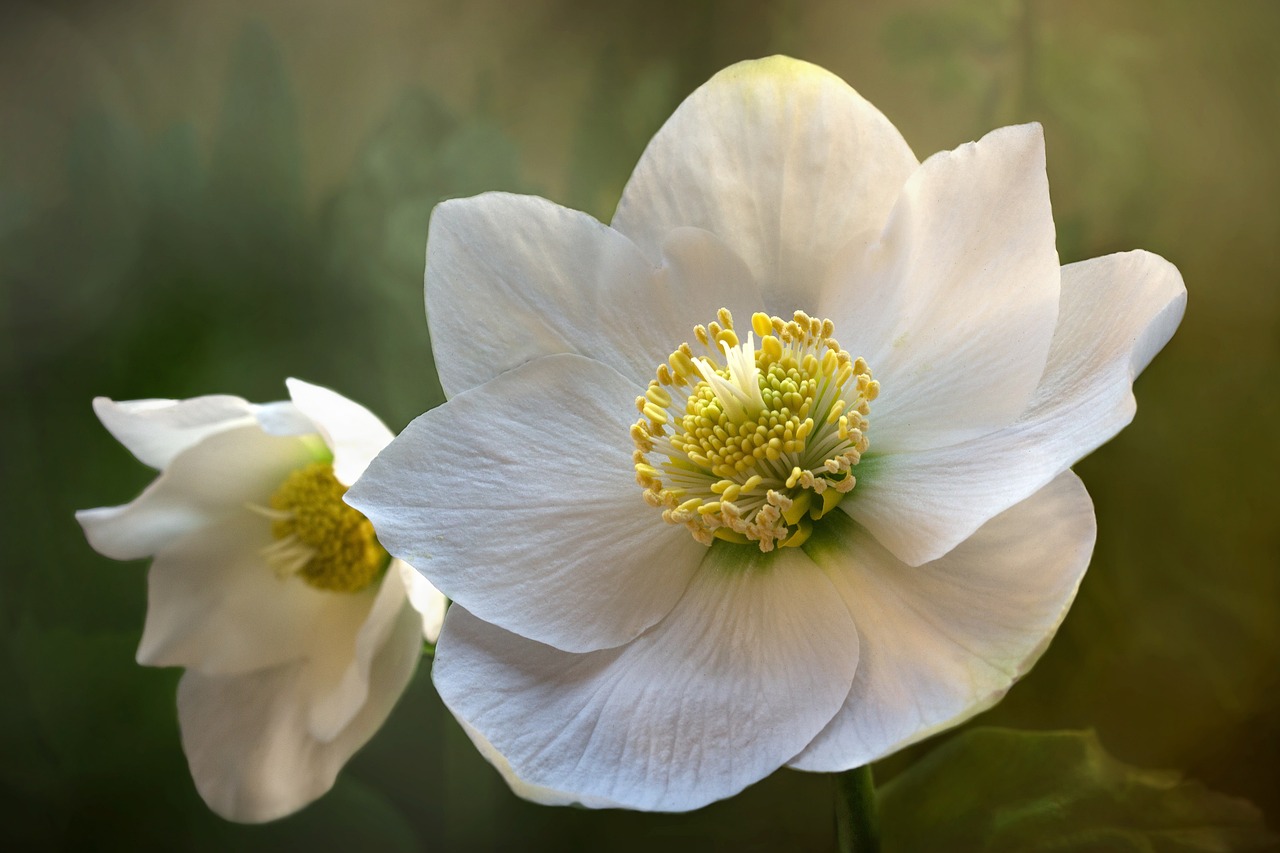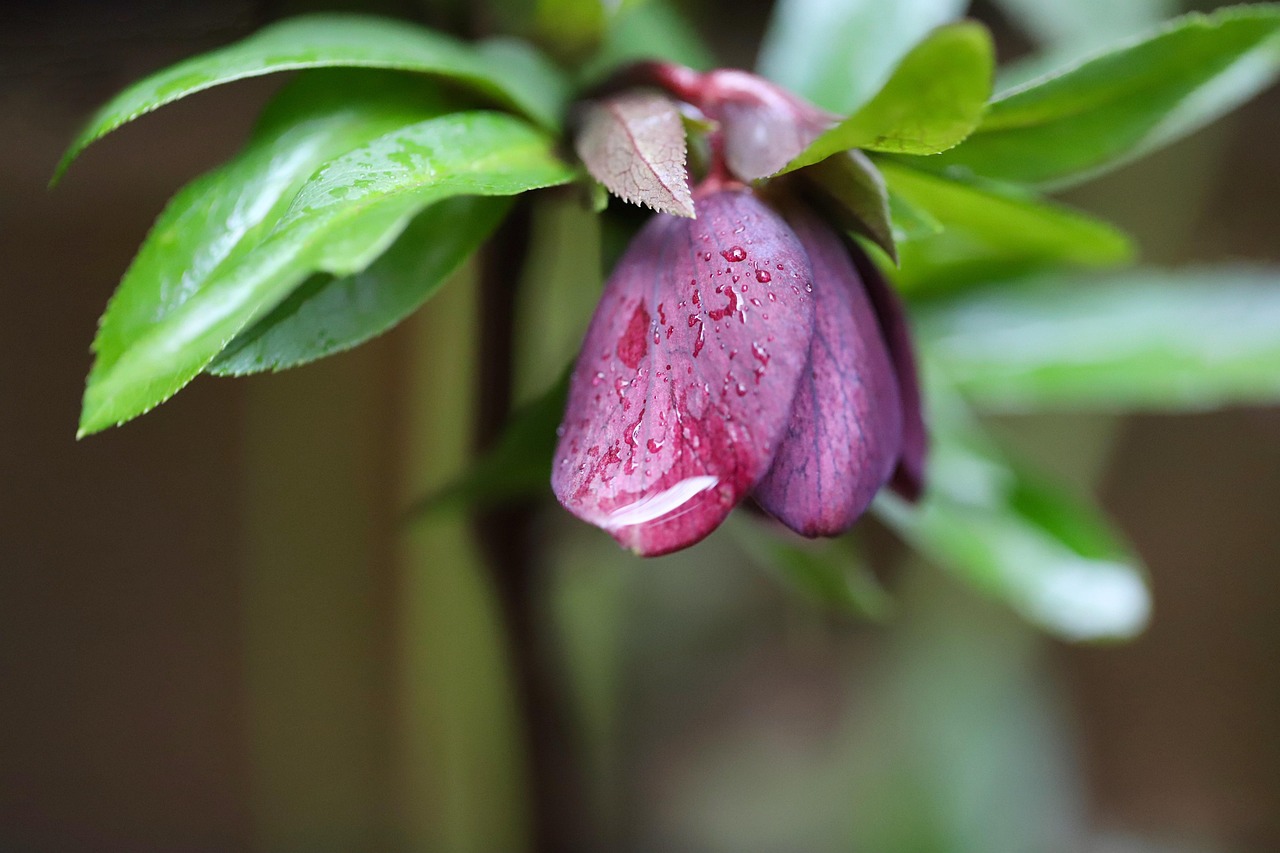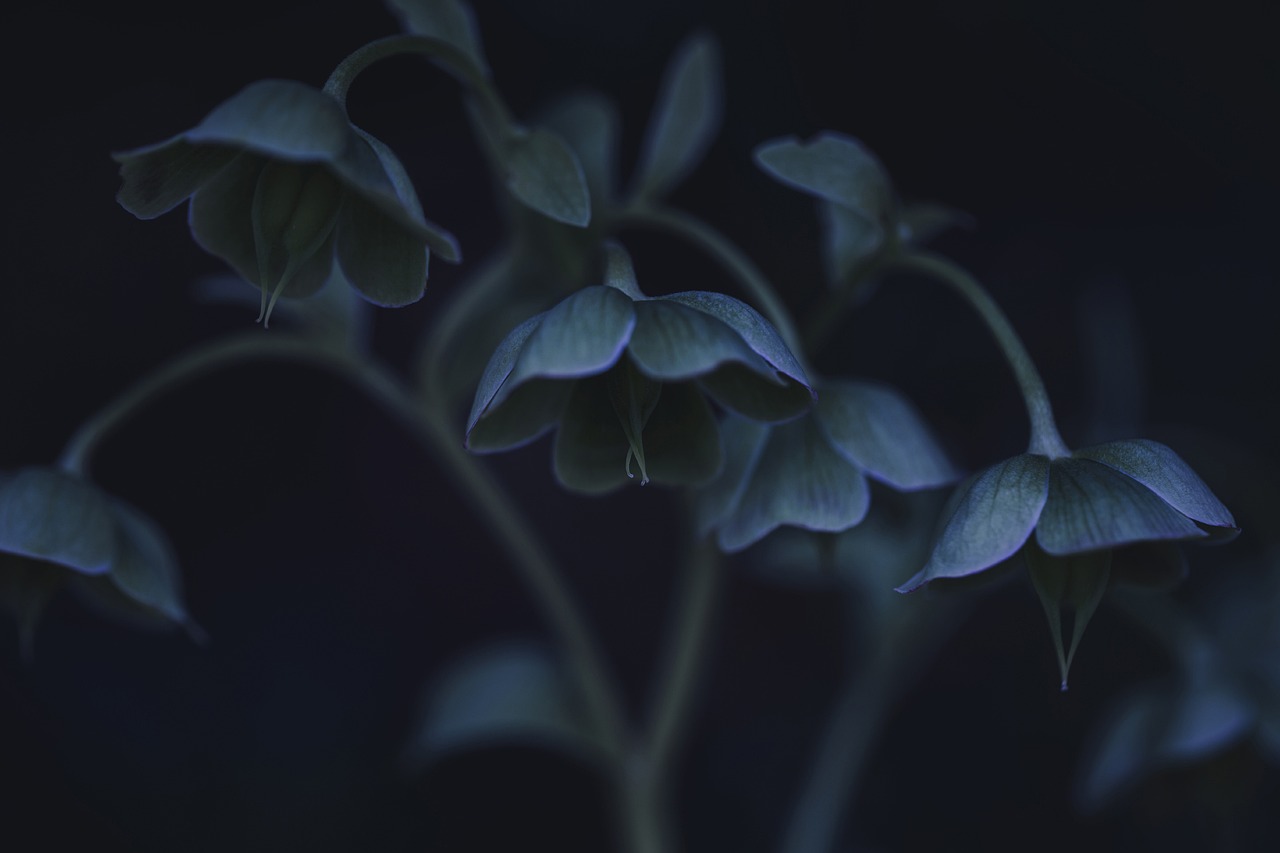Common diseases affecting hellebores include leaf spot, root rot, and powdery mildew. Effective treatments involve improving air circulation, using fungicides, and ensuring proper watering practices to promote healthy growth and prevent disease recurrence.
Hellebores, often referred to as Christmas or Lenten roses, are beloved for their early blooms and resilience in the garden. These perennial plants thrive in shaded areas and are known for their ability to add color during the winter and early spring months. However, like all plants, hellebores are susceptible to various diseases that can impact their health and appearance.

Understanding these common diseases is crucial for any gardener looking to maintain the beauty and longevity of their hellebores. Early detection and appropriate treatment can significantly improve the chances of recovery and ensure the plants remain vibrant. Below, we will explore some of the most prevalent diseases affecting hellebores, their symptoms, causes, and effective treatment options.
Common Hellebore Diseases
Hellebores face several diseases that can be detrimental to their health. Below are three of the most common issues encountered:
| Disease | Symptoms | Causes | Treatment |
|---|---|---|---|
| Leaf Spot | Dark spots on leaves; yellowing | Fungal pathogens; high humidity | Improve air circulation; use fungicides |
| Root Rot | Wilting; yellow leaves; stunted growth | Poor drainage; overwatering | Improve drainage; reduce watering |
| Powdery Mildew | White, powdery coating on leaves | High humidity; overcrowding | Prune affected areas; apply fungicides |
The table above summarizes the diseases, their symptoms, causes, and recommended treatments. Each disease has unique characteristics that require specific attention to effectively manage them.

Leaf spot is particularly common in hellebores. This fungal disease appears as dark spots on the leaves, which may eventually turn yellow and lead to premature leaf drop. High humidity levels and poor air circulation often contribute to its spread. To combat this issue, gardeners should ensure proper spacing between plants to improve airflow. Additionally, applying a suitable fungicide can help manage active infections.
Root rot represents another significant concern for hellebores. This condition typically arises from poor drainage or excessive watering, leading to wilting plants with yellowing leaves and stunted growth. Detecting root rot early is key to saving affected plants. Improving soil drainage by amending it with organic matter or sand can help alleviate this problem. Reducing overall watering frequency is also essential to allow the roots to recover.
Powdery mildew presents itself as a white, powdery coating on the leaves. It thrives in warm weather with high humidity levels, often exacerbated by overcrowded planting conditions. To minimize this issue, gardeners should regularly prune their hellebores to increase air circulation around the plants. In cases of severe infection, applying a fungicide specifically formulated for powdery mildew can provide relief.

Preventative measures are an important aspect of managing hellebore diseases. Maintaining healthy soil through regular amendments, ensuring adequate spacing between plants, and monitoring watering practices can significantly reduce the likelihood of disease occurrence. Gardeners should also inspect their plants regularly for signs of disease to address any issues promptly.
In addition to these strategies, using resistant hellebore varieties can enhance the overall health of the garden. Some cultivars exhibit a higher tolerance to diseases compared to others. By selecting these varieties, gardeners can minimize the risk of encountering severe disease issues.
Identifying Symptoms of Hellebore Diseases
Recognizing the symptoms of hellebore diseases is vital for prompt and effective treatment. Many diseases share similar signs, making it important for gardeners to be vigilant. Below are some key symptoms associated with common hellebore diseases:

- Leaf Spot: Look for dark brown or black spots on the leaves accompanied by yellowing.
- Wilting: A general droopiness or lack of turgor in leaves might indicate root rot.
- Stunted Growth: Reduced size in new growth can be a sign of multiple issues, including root rot.
- White Powdery Coating: This is indicative of powdery mildew, which can spread quickly.
Understanding these symptoms can help in early diagnosis and treatment, ultimately saving the hellebore plants from severe damage.
The Role of Environmental Factors
The environment plays a significant role in the health of hellebores. Factors such as humidity, temperature, and soil conditions can greatly influence disease prevalence. Here are some key elements to consider:
- Humidity: Hellebores thrive in moderate humidity. Excessively high levels can promote fungal diseases.
- Soil Drainage: Poorly draining soil often leads to root rot. Hellebores prefer well-draining soil that retains some moisture.
- Temperature Fluctuations: Sudden changes in temperature can stress plants, making them more susceptible to diseases.
- Light Exposure: While hellebores prefer shade, they still need adequate light to thrive. Complete darkness can weaken plants.
By managing these environmental factors, gardeners can create a more favorable growing environment for their hellebores and reduce the likelihood of disease outbreaks.
Preventative Treatments for Hellebore Diseases
Prevention is always better than cure when it comes to plant health. Implementing preventative treatments can significantly reduce the risk of diseases affecting hellebores. Here are some effective strategies:
- Regular Inspection: Regularly check plants for any signs of disease or distress. Early detection allows for quicker intervention.
- Proper Watering Practices: Water hellebores at the base and avoid overhead watering to minimize leaf wetness.
- Soil Amendments: Enhance soil quality by adding organic matter to improve drainage and nutrient content.
- Cultural Practices: Rotate planting locations each season to prevent pathogens from establishing in the soil.
These practices not only promote healthy growth but also create an environment that is less conducive to disease development.
Treatment Options for Specific Diseases
If a hellebore plant becomes infected, timely and appropriate treatment is essential. Below are some targeted treatments for the diseases previously mentioned:
Treatment for Leaf Spot
For managing leaf spot infections, follow these steps:
- Remove Affected Leaves: Prune and dispose of any leaves showing symptoms to prevent further spread.
- Fungicides: Apply a fungicide labeled for leaf spot diseases according to the manufacturer’s instructions.
- Improve Airflow: Space plants adequately to allow for better air circulation, which helps reduce humidity around the foliage.
Treatment for Root Rot
To treat root rot, consider these actions:
- Assess Soil Moisture: Check soil moisture levels before watering. Ensure that the top inch of soil is dry before re-watering.
- Amend Soil: Add sand or perlite to improve drainage and aeration in the soil.
- Remove Affected Roots: If possible, gently lift the plant and remove any blackened or mushy roots before replanting in fresh soil.
Treatment for Powdery Mildew
If powdery mildew is detected, implement the following treatments:
- Increase Air Circulation: Prune surrounding plants to enhance airflow around infected hellebores.
- Fungicides: Use an appropriate fungicide specifically targeted at powdery mildew, applying it as directed.
- Avoid Overcrowding: Ensure that plants are not too close together, which can promote humidity and disease spread.
By taking these steps, gardeners can effectively manage specific diseases and help their hellebores thrive despite potential health challenges.
Companion Planting for Hellebores
Companion planting can be an effective strategy to enhance the health and resilience of hellebores. By selecting plants that complement each other, gardeners can create a more balanced ecosystem in their gardens. Companion plants can help deter pests, improve soil health, and even provide shade or support for hellebores.
Benefits of Companion Planting
There are several benefits to incorporating companion plants alongside hellebores:
- Pest Control: Certain plants can repel harmful insects that may target hellebores.
- Soil Enrichment: Some companion plants can improve soil nutrient levels, benefiting nearby hellebores.
- Microclimate Creation: Taller plants can provide shade, helping to maintain moisture levels in the soil.
- Attracting Beneficial Insects: Companion plants can attract pollinators and natural predators of pests.
Choosing the right companions can make a significant difference in the overall health of hellebores.
Recommended Companion Plants
Below are some recommended companion plants that grow well with hellebores:
| Companion Plant | Benefits |
|---|---|
| Ferns | Provide shade and retain moisture in the soil. |
| Hostas | Share similar growing conditions; help deter pests. |
| Astilbe | Add height and color; thrive in similar conditions. |
| Geraniums | Repel certain pests and add aesthetic appeal. |
| Heuchera (Coral Bells) | Add foliage texture and help retain soil moisture. |
These companion plants not only enhance the visual appeal of a garden but also contribute to a healthier growing environment for hellebores.
Cultural Practices to Support Hellebore Health
In addition to companion planting, implementing sound cultural practices is essential for maintaining healthy hellebores. Here are some practices that can support plant vitality:
- Mulching: Applying a layer of organic mulch around hellebores helps retain moisture, suppress weeds, and improve soil quality as it breaks down.
- Regular Feeding: Use a balanced fertilizer during the growing season to promote robust growth and flowering.
- Proper Pruning: Trim back dead or damaged leaves after flowering to encourage new growth and improve air circulation.
- Sowing Seeds: Consider allowing a few hellebore seeds to fall and germinate naturally, as this can lead to new plants that may be more resilient to local conditions.
Implementing these cultural practices can further enhance the health and resilience of hellebores in any garden setting.
Understanding Hellebore Viruses
While many diseases affecting hellebores are caused by fungi or bacteria, viral infections can also pose a threat. Hellebore viruses are less common but can have serious impacts on plant health. Common symptoms include mottled leaves, stunted growth, and poor flowering. Unfortunately, there are no chemical treatments available for viral infections; thus, prevention is key.
Preventative Measures Against Viruses
To help protect hellebores from viral infections, consider these preventative measures:
- Select Healthy Plants: Always purchase hellebore plants from reputable sources to avoid introducing viruses into your garden.
- Avoid Mechanical Damage: Be cautious when handling plants. Wounds can provide entry points for viruses.
- Practice Good Hygiene: Sanitize tools and equipment regularly to prevent the spread of pathogens between plants.
- Monitor Plant Health: Regularly check for signs of distress and remove any infected plants immediately to prevent further spread.
By incorporating these practices, gardeners can minimize the risk of viral infections affecting their hellebores.
The Importance of Soil Testing
A healthy plant starts with healthy soil. Conducting regular soil tests can provide valuable information regarding nutrient levels, pH balance, and organic matter content. Understanding the condition of the soil can help gardeners make informed decisions about amendments and care practices for their hellebores.
How to Conduct Soil Testing
The process of testing soil is straightforward and involves the following steps:
- Collect Soil Samples: Use a clean tool to collect soil from multiple areas of the garden to create a composite sample.
- Dry the Samples: Allow the samples to dry completely before sending them to a testing lab or using a home test kit.
- Send for Analysis or Conduct Tests: Follow the instructions provided with the test kit or lab services to analyze pH levels and nutrient content.
- Interpret Results: Use the results to determine necessary amendments, such as fertilizers or lime, to optimize soil conditions.
A proactive approach to soil testing can lead to healthier hellebore plants and better gardening outcomes overall.
Maintaining Hellebore Health Through Seasonal Care
Seasonal care is essential for the longevity and vitality of hellebores. Each season presents unique challenges and opportunities for maintaining healthy plants. Understanding how to care for hellebores throughout the year will enable gardeners to provide the best environment for these beautiful flowers.
Spring Care
As hellebores begin to emerge from dormancy in spring, several key tasks should be performed:
- Cleaning Up Debris: Remove any dead leaves or debris from the previous season to prevent disease buildup.
- Fertilization: Apply a balanced fertilizer to support new growth as the plants begin to flower.
- Watering: Ensure consistent moisture, especially if spring is particularly dry.
Summer Care
During the summer months, attention should shift to maintenance and protection:
- Mulching: Add a fresh layer of mulch to help retain soil moisture and suppress weeds.
- Pruning: After flowering, prune back spent blooms and any damaged foliage to promote healthy growth.
- Pest Monitoring: Keep an eye out for pests and treat any infestations promptly.
Fall Care
As fall approaches, it is important to prepare hellebores for winter:
- Soil Testing: Conduct soil tests to assess nutrient levels before winter sets in.
- Watering: Ensure the plants are well-watered before the ground freezes, especially in dry spells.
- Covering Plants: In regions with harsh winters, consider applying a protective layer of mulch or leaves around the base of the plants.
Winter Care
During winter, hellebores typically go dormant, but care should still be taken:
- Avoid Overwatering: Check that plants are not sitting in waterlogged soil, as this can lead to root rot.
- Monitoring: Regularly inspect for signs of diseases or pests that may have overwintered in the garden.
- Planning: Use this time to plan for any changes or additions to your hellebore collection for the upcoming growing season.
Final Thoughts
Caring for hellebores involves understanding their specific needs and the common diseases that can affect them. By recognizing symptoms early and employing effective treatment strategies, gardeners can maintain healthy plants. Additionally, utilizing companion planting and sound cultural practices will further enhance the health of hellebores.
The importance of seasonal care cannot be overstated. Each season presents unique opportunities and challenges that, when addressed properly, can lead to thriving hellebore plants. Regular soil testing allows gardeners to make informed decisions about amendments, ensuring optimal growing conditions.
In conclusion, with vigilance and proactive care, hellebores can flourish in any garden. By following the guidelines outlined in this article, gardeners can enjoy the beauty of these resilient plants while minimizing disease impact. With knowledge and dedication, hellebores can provide joy and color for many years to come.
